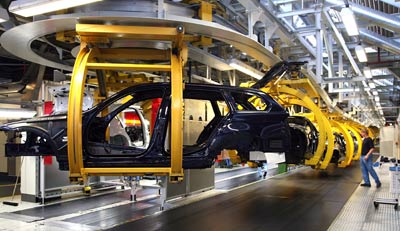Do you know what it takes to assemble an automobile?
It’s easy to imagine that all vehicles are stitched together by an army of robots endlessly welding and hammering and using a robust combination of tough rivets, bolts and various other types of unwieldy machinery.
But the reality is very different.
In fact, many modern vehicle makers actually use glue (yep, GLUE) to bond some parts together, which may come as something of a surprise to those already concerned about the safety of contemporary automobiles.
However, there’s no need to worry.
Specialist Adhesives
Rather than manufacturers throwing vehicles together with the kind of glue you’d find in a DIY store, they’re using specialist structural adhesives designed specifically for the automotive industry and formulated to withstand the pressures of modern driving.
This reliance on glue has come around as manufacturers attempt to make their vehicles lighter. Why? Because they’re striving to meet more stringent fuel economy requirements, so a shift in process is necessary.
Of course, this is fantastic news for adhesive makers and suppliers, with reports suggesting the global market for structural adhesives used in cars, aircraft and various other vehicles should top a whopping $2bn this year.
Not only that, but this market is flourishing.
Commentators estimate it’s growing at between four and five per cent a year, with Steve Henderson, president of Dow’s automotive unit claiming, “Bonding [with adhesives] is the new welding.
Why? Because aluminium doesn’t willingly weld to steel but can be glued.
Indeed, according to Daniel Murad, chief executive of ChemQuest, around 12 kilograms of adhesives go into your average car, which is an increase of 4kg in the last 10 years. In addition, John Hill, a Ford researcher, expects the adhesive content of vehicles to rise even further.
Chemically Formulated Epoxies
As you might expect, using adhesives in auto manufacturing involves much more than whipping out a spray gun and praying two parts of the vehicle stick together with a run-of-the-mill glue. Nope, chemically formulated epoxies are what you need.
Surprisingly, adhesives are also being used to glue the engines of cars, with valve covers, intake manifolds and oil pans attached using just some bolts and an adhesive material that forms an airtight gasket or seal.
Glue is used inside the vehicle, too.
Whether it’s for seating (bonding foam and fabric), affixing wall coverings or panels, holding down the flooring or using it for insulation purposes, spray glue adhesives play a critical role in ensuring the safety and comfort of our motors.
What do you think?
Do you feel comfortable knowing that many parts of your vehicle are likely glued together? Please let us know by leaving a comment below – we’d love to hear from you.






